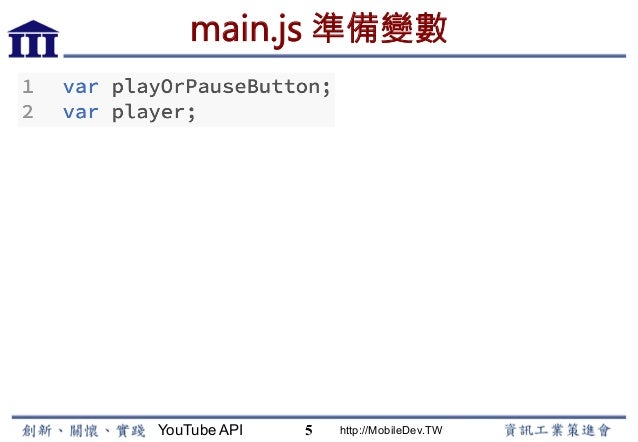

You need to wait for the player to be ready though. Failed to load latest commit information. You can access the youtube player's instance by adding a ref on the component. GitHub - aaronmeder/youtube-iframe-api-demo: YouTube Player IFrame API Demo. Programatically loads a new video on the player by URL Programatically loads a new video on the player by ID You can access these methods by adding a ref on the component. The Youtube IFrame API allows you to embed a YouTube video player (using an IFrame to contain the video) on your website and control the player using their. Make sure to look at all player variables as this will help you remove controls from the youtube iframe.įires when the player is ready and the player's instance can be usedįires when the player encounters an error įires when player ready but not started because no videoįires when player stops playing and is on pauseįires when a video was added to the player's queue but hasn't played yetįires when player starts buffering / loading
#YOUTUBE IFRAME API FULL#
The iframe's player variables, full list: The iframe's height note: youtube asks for 200 minimum The iframe's width note: youtube asks for 200 minimum Youtube video url note: both "ytid" & "yturl" can't be used at the same time Youtube video id note: both "ytid" & "yturl" can't be used at the same time When the prop changes, the player will automatically load the new relevant video. Just add the component where you want with either a id or url prop. Click the +/ − or the function name to expand/shrink the description.Import Vue from 'vue' import VuePlayerPlugin, ) How it works ? The extended descriptions are minimized by default for ease of locating functions by name. Adjust this based on your audience’s screen resolution. youtube-bg player selector has a variable minimum width and height. If the player displays controls, it must be large enough to fully display the controls without shrinking the viewport.
Embedded players must have a viewport that is at least 200px by 200px. Here’s the HTML sample code: Here’s the basic CSS code: Note the. This page demonstrates the YouTube Player API's functions. Using the YouTube Iframe API, this is pretty easy to achieve. For most of the functions listed on this page, their parallels can be found in the original documentation, which may contain some extra info about arguments and such. There’s an increasing trend of adding full-width (possibly full-height) YouTube video covers with autoplay. This documentation is fairly minimal in an effort to not over-rewrite or copy YouTube's original documentation. youtube_iframe_api.js - Custom YouTube iframe API script.
#YOUTUBE IFRAME API UPDATE#
Looking at YouTube's API update history, this does not seem to be likely to happen though. The second script is automatically async as well with no options to control this.Īs this script is a third-party library, if YouTube drastically changes the way their API functions, this script has to be updated too. The iframe_api is just a loader script and inserts another node for the actual API. Including YouTube's iframe_api script effectively loads 2 scripts instead of one. There could be a reason for this on some untested edge cases or mobile platforms, but none have been found yet. Testing seems to indicate that this message is needed only once, so this custom script only sends it once. YouTube's API repeatedly postMessage's a listening event to the iframe every 250ms. With more events available for use, a poll loop is no longer required for state update. YouTube's API provides a limited amount of events for checking state updates.Īs such, things like load progress or current time would require a poll loop. This makes it very difficult (or impossible) to use their API inside of a userscript, because the event (and subsequently the YT object) will exist on the main window object and not inside the userscript.


YouTube's API requires a function called onYouTubeIframeAPIReady to exist somewhere in a tag on the page.
#YOUTUBE IFRAME API PLUS#
This custom API contains all of these events plus several extra state changing events for things such as volume, load progress, and playlist entry changing.Īdditionally, these events expose the previous value before the change. It can also be used to learn how the basic postMessage system communicates between the main window and the embedded iframe. It can be directly integrated into an existing script or loaded as a stand-alone script. It contains a few extra features and has readable and modifiable source code. This library is a reworking of YouTube's default embedding iframe API.


 0 kommentar(er)
0 kommentar(er)
